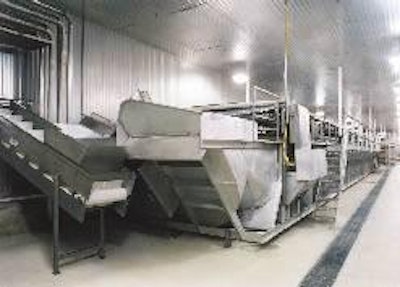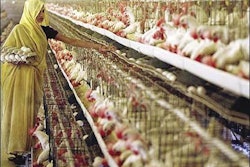
When it comes to operating poultry processing plants, there are some rules that have been chiseled in stone. One of these rules has required that processing areas of the plant be cleaned and sanitized at least every 24 hours. From this rule, the industry evolved the norm of operating two production shifts and one sanitation shift per day.
A couple of years ago, the Food Safety and Inspection Service of the USDA announced that it would consider deviations from this 24-hour sanitation requirement, called "extended clean up," that could be justified with microbiological data. This is part of the agency's attempt to make science-based decisions, and to foster innovation while improving food safety. "There was a lot of excitement in the industry when this was announced, but there hasn't been a lot of progress," said Dr. Alling Yancy, vice president food safety and production programs, U.S. Poultry and Egg Association.
One success story
Michigan Turkey Producers (MTP) is always looking for ways to be more efficient, according to Dave Burkholder, raw plant manager, and he said that the company also makes efforts to be as green as possible. MTP's Wyoming, Michigan, slaughter and deboning plant processes around 18,000 head of heavy toms on one shift each processing day. Burkholder said that when looking at the plant's water usage and considering how to save water, the question was raised as to whether or not they really needed to empty and clean all four of the plant's immersion chillers every shift. MTP's bird chillers are massive, each one provides one hour of dwell time for up to 100,000 pounds of carcasses. To facilitate cleaning, the chillers one and two are housed in separate rooms from chillers three and four. Each of the chillers has its own clean-in-place rechilling system. Unchilled tap water is added to each of the chillers to maintain the proper water level. Counter current flow is maintained in the chillers with overflow from chiller four flowing into chiller three and so on. Sodium hypochlorite is added to the return line going to the rechiller for chiller four; no biocide is added to the other chillers.
A small step for science
Burkholder said that MTP has outstanding microbial test results on its carcasses and its chiller water and it is able to maintain those results. The company discussed with its local USDA personnel the concept of not emptying the chillers after one shift of production and also spoke with the USDA's new technology group.
With USDA approval, the company did not empty chiller three and chiller four, and continued to refrigerate and aerate the water overnight. The next day, the microbial tests on the water in chillers three and four had lower counts than the previous day's results. Birds were processed as usual, a number of microbiological tests were run on the carcasses and all of the product was put on hold over the weekend. When the test results came back acceptable, the product was released.
Burkholder said: "MTP developed a program and submitted it to the USDA's office of new technology for approval. After review, a no-objection letter was generated." MTP now cleans chillers one and two every day, but only empties and cleans chillers three and four every other production day. Daily microbiological tests are performed.
"We did this because we wanted to be as green as possible," Burkholder said. "We wanted to reduce water and energy usage and to reduce cost. Because of the science-based approach, you can think outside the box and change how you do things if the micro numbers will support it."
Other opportunities
"Extended clean up was first put out by the USDA a few years ago, but the amount of work that it takes to study this and then do the testing to show the effects have discouraged some companies from pushing forward," Yancy said. In some cases that he is aware of, where processors have moved forward on these projects, there have been some external factors, like a local shortage of water, which has provided impetus, not just enhanced efficiency.
Yancy said there are real benefits from extended clean up for some processors; but that it requires a lot of work to get a program started and that the processor must consider the potential pitfalls as well. "In my experience, it can be a long-drawn process that is not without peril, but not without significant benefit as well. This is not something to go into lightly. There are many benefits, but there are at least one or two major potential drawbacks if this is not appropriately addressed. If you have a mess-up and you don't recognize it or take appropriate action, then you don't have a break point between production days. The problem can carry over from one day to the next."
Yancy said that he is optimistic that in the future both the poultry industry and the USDA will allow science to determine how plants are operated. "I believe that there will be a day when we have more freedom of operation, just as long as we can prove what we want to do scientifically. We are a long way from there now; we still have a lot of command and control mentality in the USDA."


















